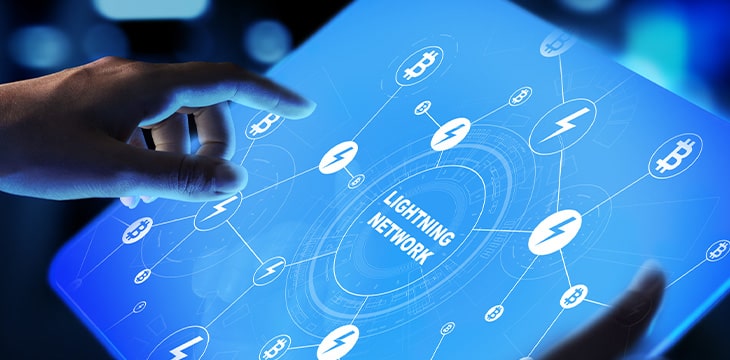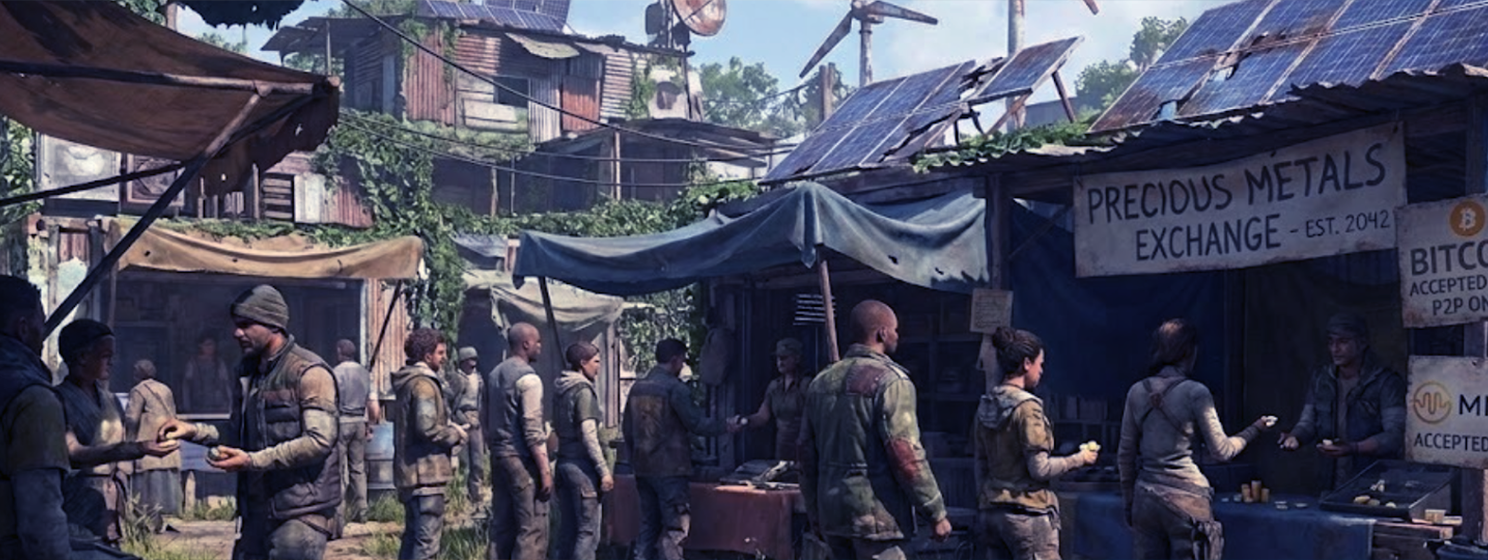|
Getting your Trinity Audio player ready...
|
BTC’s Lightning Network is overly-complex, prone to failures, and creates legal problems for its users. That’s the conclusion of a review recently published by Unbounded Capital in an article titled “Why the Lightning Network Doesn’t Work.” The transactions layer, designed to “solve” BTC’s self-inflicted scaling problems, fails at its main purpose and isn’t even necessary, according to authors Joshua Henslee and Zach Resnick.
In its current state, the BTC network is capable of processing only four to seven transactions per second (in reality, rarely more than five) across the entire world. Lightning Network appeared in the 2016-2018 period and functions as a network of “sidechains”—which process their own transactions and settle only periodically on the main BTC blockchain. Taking most daily transactions off-chain in this manner means users avoid BTC’s notorious congestion and high transaction fees.
As the above paragraph notes, it does this by taking transactions off the main blockchain. This alone removes several of Bitcoin’s transparency and auditability features and moves the majority of daily transactions to networks that are, in fact, not Bitcoin at all. Consequently, this increases the risk for users to lose funds (as many have), have transactions fail altogether, and adds potential regulatory problems for participants tasked with keeping everything on the Lightning Network in some kind of order.
Unbounded’s summary notes that Lightning Network is an attempt to solve computing’s “traveling salesman problem,” regarded as “NP-hard” in computer science—or in other words, potentially unsolvable. To use Lightning Network, it’s necessary to open “payment channels” between users with pre-funded amounts of BTC. Since it’s not practical for every transactor to create a payment channel with every single merchant or recipient, Lightning wallets try to find an optimal route via hops through existing payment channels until the payment reaches its destination. The problem is, it often doesn’t.
Then there’s the problem that Lightning Network users must remain online at all times for channels to stay open reliably. Go offline, and there’s a risk one party may “settle” on the main BTC chain—or close the channel unilaterally, stealing all funds within.
Unbounded mentions proposed “watchtowers” and “Lightning Service Providers” (LSPs) to solve this particular problem, as well as to prevent double-spends and provide extra liquidity to reduce the number of failed transaction attempts. However, this creates yet more complexity and reliance on trusted third parties, which the article notes as one of the basic problems Satoshi Nakamoto was attempting to solve.
But that’s not all: here comes regulation
New parties, whose job is facilitating payments and transfers, are bound to prick up regulators’ ears. And here, Lightning Network services run up against FinCEN’s legal definitions of a Money Services Business and Money Transmitters. Since FinCEN has also issued guidances noting that distributed app (DApp) software running on blockchains meet these definitions, they likely apply to Lightning Network services.
BTC looks to individual participants (Lightning Network node operators, main blockchain miners) to maintain its visage of “decentralization.” Applying FinCEN’s regulations to Lightning nodes means operators would have the full burden of the Know Your Customer/Anti-money laundering law (KYC/AML) requirements for all transactors, which is near-impossible. Unbounded notes that even large, regulated exchanges have balked at the idea of running their own Lightning hubs.
Lightning Network’s (non-existent) necessity
Unbounded also mentions the problems BTC has faced in El Salvador with Lightning and other transaction solutions, such as the country’s Chivo wallet, which features Lightning Network functionality. While some of the problems may have been unique to Chivo, it highlights the question of why add-on solutions are even required.
So, why is Lightning Network (and other proposed Layer 2 transaction networks) necessary for ordinary payments? In truth, it isn’t. Bitcoin’s white paper was released in 2008 with the title “Bitcoin: A peer-to-peer electronic cash system,” and that’s exactly what it was when the protocol software first landed in January 2009.
There is no mention of a 1MB transaction block size limit in that white paper, nor is there any mention of a need to limit those blocks. BTC’s 1MB limit, which later became a religious fixation for Bitcoin’s “small blocker” movement, was added as a temporary anti-spam measure in 2010 when the network was very young. The Bitcoin white paper proposes Simplified Payment Verification (SPV) as the best way to solve the scaling and “blockchain bloat” problem, enabling Bitcoin transactions to remain fast and cheap, peer-to-peer and available offline, no matter how many users are on the network.
BSV protocol developers have proved that SPV actually works, with a working library of protocols to handle messaging between participants. (Note that code libraries such as BSV’s LiteClient Toolbox for SPV is not a sidechain, separate network, or a third-party service. All transactions stay on-chain.) To handle transaction traffic, BSV simply allowed transaction block sizes to grow. As a result, BSV has never experienced problems with congestion, even at two million transactions daily or much more.
Cautious praise for Lightning Network—sort of
A recent working paper published by the Federal Reserve Bank of Cleveland (Anantha Divakaruni and Peter Zimmerman) was cautiously optimistic about Lightning Network, finding that it did make use of the blockchain more efficient with less congestion and lower fees—but also that it did so with increased counterparty risk. The paper did not delve into Lightning Network’s regulatory risks.
However, the Cleveland Fed’s authors noted that since real-world BTC usage data isn’t readily available, “we cannot say for sure whether Bitcoin is being increasingly used as a means of payment.” This is telling. After 13 years of existence, there’s very little evidence that people are even using BTC as money. For a network sold for over a decade as “the future of money,” that’s a problem.
Network congestion and high fees have been prohibitive for adoption as a payment method, and complicated and often clunky “solutions” such as Lightning Network haven’t done much to help. Price volatility caused by rampant speculation has also meant BTC (along with other digital assets) function more as edge-of-your-seat investment/trading opportunities rather than money you can actually use in daily life.
Problems with using Lightning Network don’t get much attention (at least, outside of El Salvador) because only a small minority of people use BTC for daily payments. Potential regulatory risks tend to get discussed mostly outside BTC circles and won’t kick in unless Lightning becomes widely used. As Unbounded’s article points out, regulatory problems and the impossibility of solving the Traveling Salesman problem could be fatal to Lightning Network in the long run, leaving BTC still without a workable solution for its scaling issues. But does this even matter to BTC HODLers? Perhaps that is a better question.
Watch: The BSV Global Blockchain Convention presentation, LiteClient: Scaling Blockchain with Simplified Payment Verification
https://www.youtube.com/watch?v=-j9Kvvm2xxc

 12-13-2025
12-13-2025 





